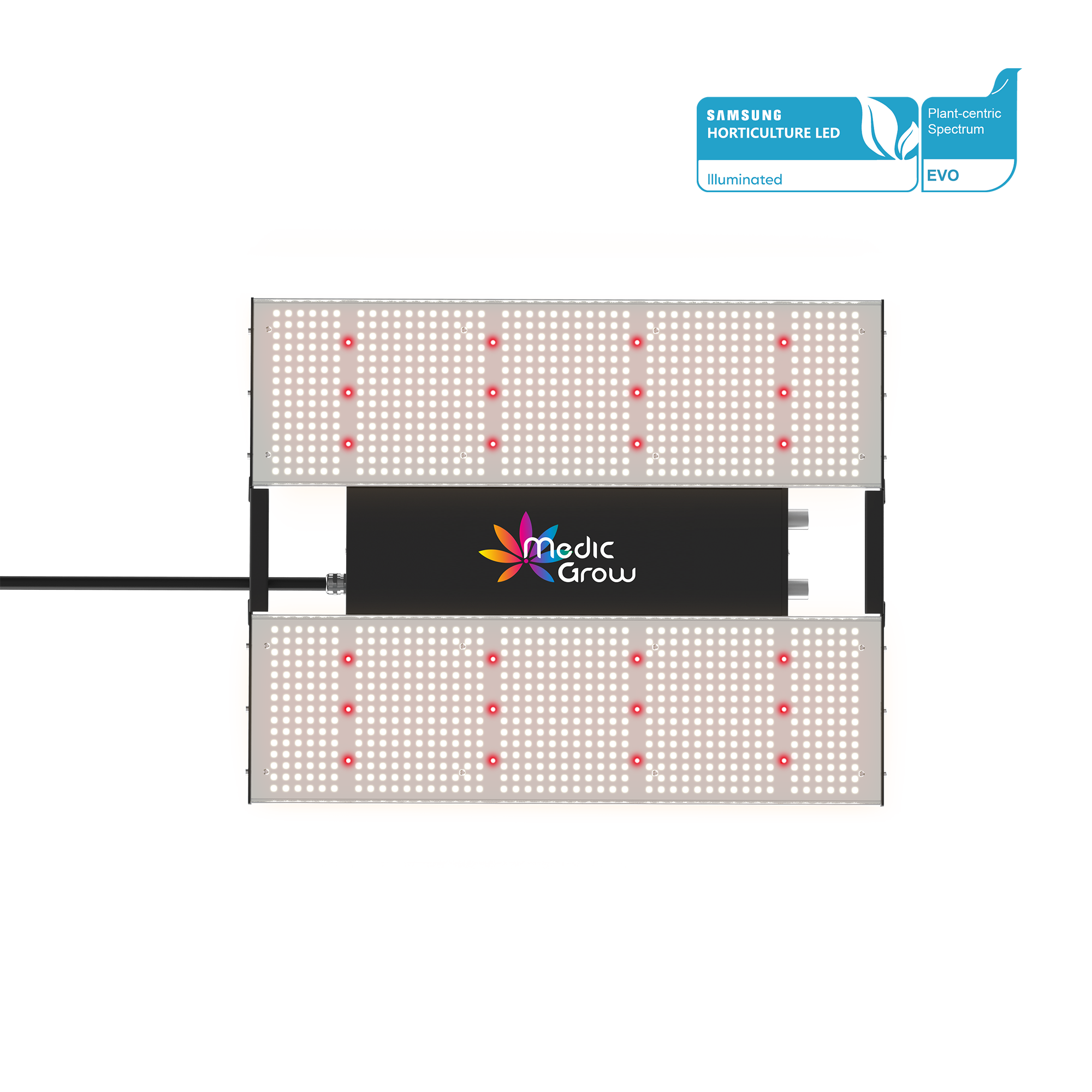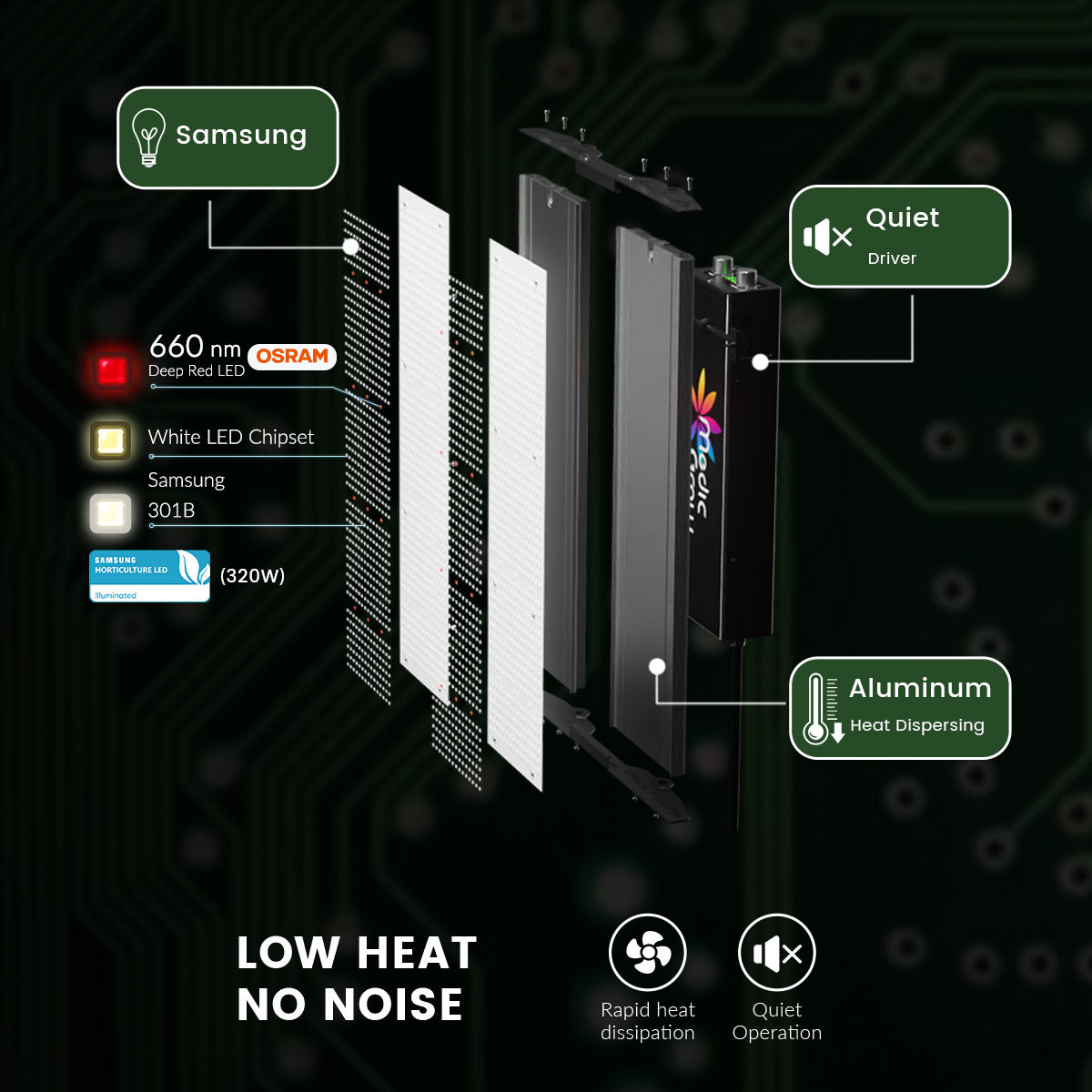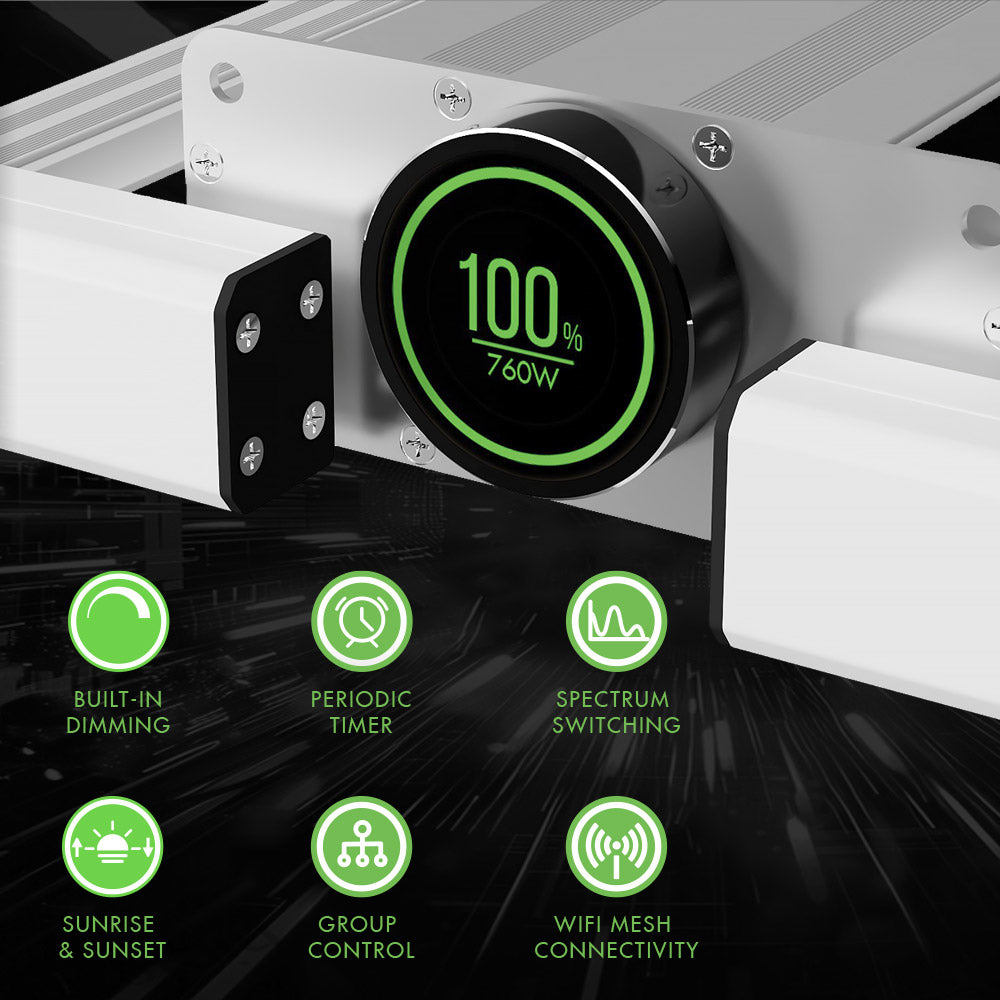
How To Control Humidity In Your Grow Tent?
Indoor growing has become increasingly popular among growers who want to grow different varieties of plants in their homes, especially with the development of indoor growing light.
People choose to grow indoor plants for various reasons: some may want to spice up their living spaces, some may want to grow their own produce while others choose to grow plants as a hobby.
Whatever the reason may be, growing indoors allows you to control the environment of the plants and have a high-quality yield.
One of the tricky factors that several growers struggle with is to control humidity.
It is something that can significantly improve the environment of a grow room and make it much more favorable for your plants.
- Part 1: What Is The Role Of Humidity In A Grow Tent?
- Part 2: How Are Temperature And Relative Humidity Related?
- Part 3: How To Control Humidity In A Grow Area?
- Part 4: Relative Humidity Chart For Indoor Plants
- Part 5: Tips To Control Humidity In A Grow Tent
What Is The Role Of Humidity In A Grow Tent?
Humidity has a vital role in creating a healthy environment for the growth of plants. Even though most plants will survive in average humidity levels indoors, it is always beneficial to maintain appropriate or ideal humidity levels to ensure that your plants reach the perfect size and quality.
Before we begin, let's start by learning some of the most basic terms that we'll be talking about in this article. This will help you keep up as we dive deeper and learn more about how humidity affects your crops.
Meaning of Humidity
Humidity is the amount or the concentration of water vapor in the air.
Water vapor is when water is in its gaseous state and is not visible to the naked eye. In simple terms, humidity tells us how much water vapor the air is holding.

A hygrometer or a humidistat is used to measure the humidity of a space. Extreme levels of humidity can bring a ton of problems.
When the humidity levels are too high, the indoor environment becomes favorable for the growth of mold, dust mites, fungus, and bacteria. This can affect individuals who suffer from allergies, respiratory problems, exhaustion, etc.
When the humidity levels are too low, one can have dry skin and hair, and itchy and irritated eyes. It can also trigger asthma symptoms and make people prone to illnesses.
What Is Relative Humidity?
As the name suggests, relative humidity is a measure of how much water vapor is present in the air compared to the maximum amount it can hold.
This amount is typically expressed in percentages. For instance, if the humidity is at 85%, the air only can soak up 15% more.
When the relative humidity reaches 100%, it means that air is completely saturated, has reached its maximum capacity, and cannot soak any more moisture. At 100% relative humidity, the dewpoint and air temperature are equal.

Image Source: help.blustream.io
Humidity levels have a significant role in indoor gardening as they affect the plant's transpiration rate. The rate of transpiration is inversely proportional to the humidity in the atmosphere—this means that as the humidity increases, the rate of transpiration decreases.
When humidity levels are higher, plants do not lose much water through evaporation, and as a result, they require less water from the roots. Humidity-loving plants typically require 50-60% or more humidity to thrive.
Not all kinds of plants thrive in humid environmental conditions. Cacti and succulents grow well in dry settings.
While growing plants indoors, growers intend to create the same environment that they would get in their natural surroundings. They do this by using 800W LED grow lights which provide plants with the light they need to carry out various processes.
When plants get the right nutrients and a suitable environment, they grow well and turn into lush green crops.
How Are Temperature And Relative Humidity Related?
By now it may be apparent to you that temperature and relative humidity are inversely proportional. Even though they don't affect each other directly, humidity affects the amount of moisture content in the air.
For example, if the temperature in a room is 24°C (or 75°F) while the relative humidity is 0%, the air temperature would feel as if it is 21°C (or 69°F).
When the temperature increases, the capacity of the air to hold more vapor increases as well. As the relative humidity of the atmosphere decreases, the temperature increases and vice versa.
When it comes to plants, high relative humidity affects the transpiration process and makes it difficult for the plant to take nutrients from the soil.
High relative humidity means that there's a lot of water vapor in the air and not enough capacity to hold more vapor—this means that less water evaporates from the plants.
High heat and extreme levels of humidity can cause harm to your crops. This makes having a temperature and humidity controller really important for growers.
In the next section, let's learn how to control humidity in a grow area.
How To Control Humidity In A Grow Area?
To control humidity in your growing tent kit, it is important to know the signs of low and high humidity in indoor plants. This way, you'll be able to inspect how your plants are doing and use preventive measures to protect them.
Signs Of Low Humidity In Indoor Plants
With low humidity levels, plants are not able to get the moisture they need from their surroundings and are likely to suffer from dehydration.
Low humidity can cause slow growth of the plant and can make the plant dry and crisp. One may also notice curled or shriveled up leaves.

If you notice wilted leaves and stems and are sure that this isn't due to overwatering, it could be due to very little moisture or low humidity.
Signs Of Excessive Humidity In Indoor Plants
Humidity sets the perfect breeding ground for mold, fungus, and bacteria and when it is coupled with poor air circulation, it can make your plants prone to fungal diseases.
These are some signs of fungal diseases:
- Black spots: Black/dark-colored spots on the upper side of leaves.
- Rust: Rust-colored spots on the underside of leaves.
- Powdery mildew: White powder-like growth on different parts of the plant.
- Botrytis blight: Gray, fuzzy mold.
Another sign that you need to control humidity is noticing root or crown rot in plants which can be identified by yellow, wilted leaves, slow growth, and poor overall health of the plant.
Succulents, for instance, have leaves that can store water to survive in the desert region. This is why they're very versatile plants that are suitable for beginners.

They can be grown in most places with low humidity. When these plants are kept in an environment with high humidity, they would slowly succumb. High humidity also affects the nutrient uptake of plants.
Relative Humidity Chart For Indoor Plants
This chart would help you understand the ideal humidity levels for different kinds of indoor plants. The right humidity levels for your plants will depend on the kind of plants that you have and their stage of growth.
| 0% | This means there's no vapor in the atmosphere. |
| 10% to 40% | The average RH levels indoors are around 40%. Plants such as succulents and cacti will be able to live in dry conditions where the RH levels are as low as 10-20%. For plants that are in the last few weeks of the flowering stage, 30-40% of humidity would suffice. |
| 40% to 50% | This is the ideal humidity range for indoors during the summer season. It is suitable for the flowering stage of plants. |
| 50% to 70% | For plants in the vegetative stage, RH levels between 40-70% are ideal. Plants such as peace lilies will do well. |
| 70% to 80% | These levels are quite difficult to maintain indoors but tropical will thrive when the humidity is this high. There may be plants that are sensitive to levels below 70% and may need to be kept in a grow area with higher humidity levels. |
| 80% to 90% | Plants such as pineapples will do well in this range. It's almost impossible to reach these levels indoors and you would need a greenhouse, glasshouse, or terrarium set-up to grow plants. |
| 90% to 100% | This range is suitable for seed germination. Using a humidity dome can help you reach, maintain and control humidity levels. |
Plants have different needs in different stages which is why their humidity requirements change as they grow.
It must be noted that humidity levels may vary across the house—for instance, bathrooms tend to have high humidity levels and are perfect for humidity-loving plants while bedrooms rooms may be much cooler in comparison.
In the next section, let's take a look at tips and tricks to learn how to control humidity levels in your grow tent.
Tips To Control Humidity In A Grow Tent
- If you're growing your plants in a designated grow room or just have plants around the house, make sure to install a central heating system or humidifier/dehumidifier to control humidity and temperature.
- Keep your subtropical and tropical plants in humid areas like bathrooms and kitchens and install a humidifier controller to ensure consistent moist control. Make sure that you keep your tropical plants away from heat sources (forced air vents, heaters, radiators) which might dry up the roots and cause dehydration. Likewise, keeping them in areas with excessive airflow may cause them to dry out.
- Humidity-loving plants require high humidity levels which can be uncomfortable for human beings as well as for plants that thrive in low humidity. This is why such plants are typically grown in a terrarium, glasshouse, or greenhouse to protect other plants from suffering.
Related Posts:
Grow Room VS Grow Tent:Which One Should You Choose
How to Set Up a Grow Tent: Step by Step Guide
How to Build Your Indoor Grow Room: Detailed Steps Explained
How to Choose the Right Grow Fan for Your Grow Room/Tent
Featured Products
Blog Posts
Contact Us with Any Idea!
- Choosing a selection results in a full page refresh.
!
































